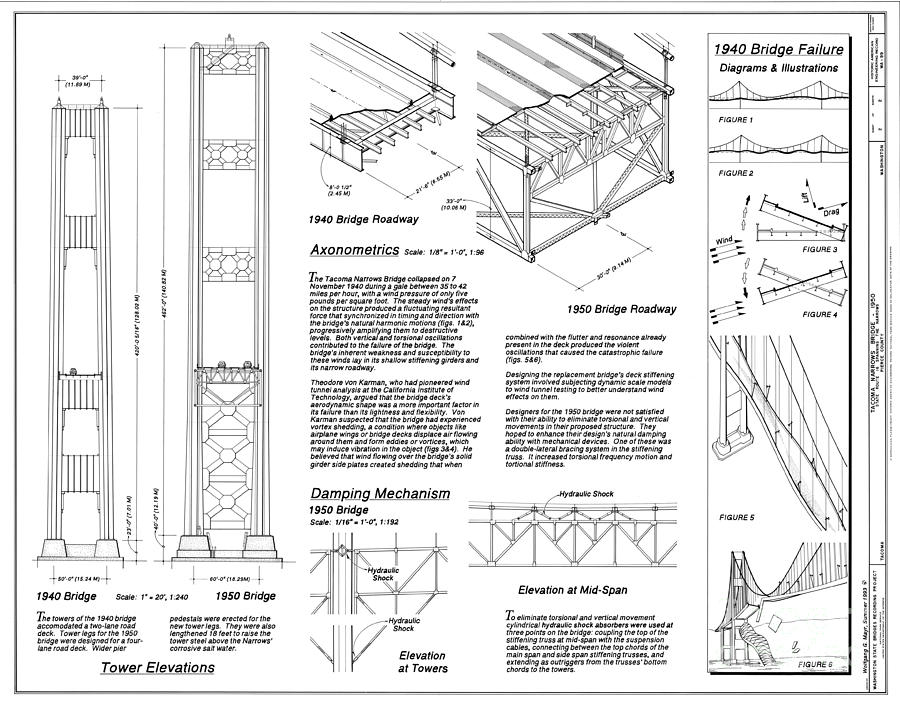The Tacoma Narrows Bridge is a suspension bridge that spans the Tacoma Narrows strait in Washington, United States. It was designed by Leon Moisseiff and opened on July 1, 1940. The bridge had a main span of 2,800 feet (853 meters) and was the third-longest suspension bridge at that time.
Design Process

The design process for the Tacoma Narrows Bridge began in 1937. The Washington State Toll Bridge Authority appointed Leon Moisseiff as the chief engineer. Moisseiff had previously designed the Manhattan Bridge in New York City.
Moisseiff's design for the Tacoma Narrows Bridge was a suspension bridge with a main span of 2,800 feet. The bridge was to be supported by two towers, each 425 feet high, and the roadway was to be 39 feet wide.
Construction

Construction of the Tacoma Narrows Bridge began in November 1938. The bridge was built using the cantilever method, which involved building the bridge out from each tower towards the middle. The roadway was made of steel trusses and was suspended from the main cables by vertical suspenders.
The construction of the bridge was completed in July 1940, at a cost of $6.4 million. The bridge was opened to traffic on July 1, 1940.
Wind-Induced Oscillations

The Tacoma Narrows Bridge was known for its wind-induced oscillations, also known as "Galloping Gertie". On November 7, 1940, wind speeds of 42 miles per hour caused the bridge to oscillate violently. The oscillations became so severe that the bridge collapsed.
The cause of the collapse was attributed to aeroelastic flutter, which occurs when wind forces cause the bridge to vibrate at its natural frequency. The vibration amplitude increased until the bridge could no longer support its own weight and collapsed.
Lessons Learned

The collapse of the Tacoma Narrows Bridge led to significant changes in bridge design and engineering. The incident highlighted the importance of aerodynamic stability in bridge design and led to the development of new techniques for designing and testing suspension bridges.
The collapse of the Tacoma Narrows Bridge also led to the development of wind tunnel testing, which is now a standard practice in bridge design. The lessons learned from the collapse of the Tacoma Narrows Bridge have helped to prevent similar incidents from occurring in the future.
Conclusion
The design of the Tacoma Narrows Bridge was an ambitious project that ultimately failed due to wind-induced oscillations. However, the lessons learned from the collapse of the bridge have contributed to significant advancements in bridge design and engineering. The Tacoma Narrows Bridge remains an important case study in the history of engineering and serves as a reminder of the importance of safety and stability in bridge design.